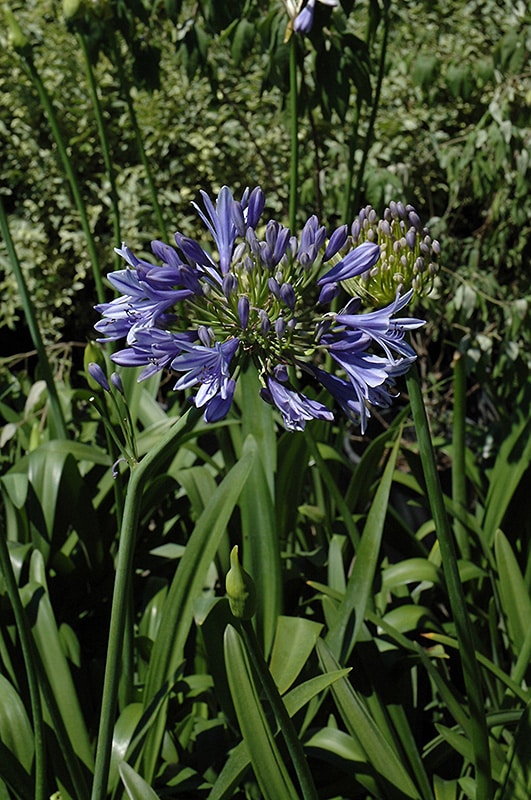Letting Loose the Secret to Effective Agapanthus Cultivation: Idea for a Flourishing Garden
In the world of horticulture, cultivating agapanthus effectively requires a critical approach that incorporates different facets of plant treatment. By comprehending the subtleties of agapanthus growing, one can develop an environment where these plants thrive and grow abundantly.
Planting Agapanthus: Best Practices
When planting Agapanthus, proper soil prep work is crucial for guaranteeing effective development and development of these stunning blossoms. Agapanthus, commonly referred to as Lily of the Nile or African lily, grows in well-draining dirt with a slightly acidic to neutral pH level - Agapanthus. Before planting, it is vital to modify hefty clay soils with organic matter such as compost or peat moss to enhance drain and supply crucial nutrients for the plants
To grow Agapanthus, pick a location that gets complete sunshine to partial color, as this will certainly promote healthy and balanced development and plentiful flowering. Dig a hole two times the size of the plant's origin round and position the Agapanthus at the very same deepness it was formerly growing. Gently backfill the opening with dirt, pushing down securely to eliminate any type of air pockets around the roots.
Water the recently grown Agapanthus completely and continue to keep the soil equally wet, specifically throughout the plant's energetic expanding season. Agapanthus. Applying a balanced plant food once a month can additionally sustain the plant's development and blooming. By complying with these best practices for planting Agapanthus, you can develop a magnificent display of these exciting blossoms in your garden
Ideal Dirt Issues for Agapanthus
For optimal growth and blooming success of Agapanthus plants, making certain the dirt problems are optimal is crucial. Agapanthus favors soil that is abundant in nutrients, so incorporating a well balanced plant food during the expanding season can promote healthy and balanced growth and lively blossoms.

Watering and Fertilizing Tips
To make sure healthy and balanced development and lively flowers, appropriate watering and feeding techniques are necessary for successful Agapanthus cultivation. Agapanthus plants benefit from normal watering, specifically throughout the growing season.
When it comes to feeding Agapanthus, a well balanced plant food with equivalent parts nitrogen, phosphorus, and potassium can be applied in the springtime to advertise healthy development and flowering. Slow-release fertilizers are ideal for giving nutrients slowly over a prolonged period. Prevent over-fertilizing, as this can lead to extreme vegetation growth at the expenditure of blossoms.
Furthermore, incorporating raw material like compost right into the dirt can enhance nutrient degrees and improve dirt framework, aiding in the total health of the Agapanthus plants. By adhering to these watering and feeding suggestions, garden enthusiasts can ensure their Agapanthus plants grow and create stunning screens of blossoms.
Pruning and Deadheading Methods
Correct pruning and deadheading strategies play an essential role in keeping the health and appearances of Agapanthus plants, matching the important practices of watering and feeding for successful farming. Pruning Agapanthus involves eliminating invested blossom heads, dead or yellowing leaves, and general shaping of the plant to advertise better development. Deadheading, the process of eliminating discolored flowers, not just enhances the plant's look but also urges further blooming.
When deadheading Agapanthus, it is a good idea to trim off the blossom stem at i thought about this the base making use of sharp, clean shears. This procedure reroutes the plant's energy from seed manufacturing back into root and vegetation growth, advertising a much healthier and much more robust plant. Regular deadheading can prolong the growing duration of Agapanthus and prevent self-seeding, which can result in overcrowding.
In terms of trimming, Agapanthus generally gain from a light trim after flowering to clean the plant and motivate fresh growth. Cutting down the spent blossom stems and getting rid of any type of dead or broken foliage helps preserve the plant's vigor and overall appearance. However, it is important to avoid reducing right into the crown of the plant, as this can compromise its health and wellness.

Protecting Agapanthus From Vermins and Diseases
Carrying out efficient insect and disease monitoring strategies is essential to safeguarding the health and vigor of Agapanthus plants in farming. Agapanthus are typically durable plants, however they can still fall target to different pests and illness otherwise correctly cared for. One typical insect that influences Agapanthus is the Agapanthus borer, a caterpillar that passages into the plant, creating damage to the leaves and blossoms. To avoid infestations, regular inspection of the plants is necessary. If borers are discovered, they can be manually gotten rid of, or insecticidal soap continue reading this can be made use of as a control procedure.
In addition to bugs, Agapanthus are vulnerable to illness such as origin rot and fungal fallen leave areas. By remaining attentive and addressing bug and condition issues quickly, garden enthusiasts can help their Agapanthus thrive and prosper.

Verdict
In verdict, successful farming of agapanthus needs correct redirected here planting strategies, optimal soil problems, sufficient watering and fertilizing, routine pruning and deadheading, and defense from insects and conditions. By complying with these tips and techniques, garden enthusiasts can ensure a growing yard full of attractive agapanthus flowers. Agapanthus. Remember to maintain consistent treatment and focus to information to promote the health and wellness and long life of these stunning plants
When growing Agapanthus, correct dirt preparation is vital for guaranteeing successful development and development of these lovely blossoms.Water the newly planted Agapanthus thoroughly and proceed to maintain the soil evenly wet, particularly during the plant's energetic expanding season.For ideal growth and blooming success of Agapanthus plants, making certain the dirt conditions are ideal is critical. When transplanting or planting Agapanthus, guarantee the dirt is well-prepared to supply the needed structure for the plants to establish themselves successfully. One typical pest that affects Agapanthus is the Agapanthus borer, a caterpillar that tunnels right into the plant, creating damages to the flowers and leaves.